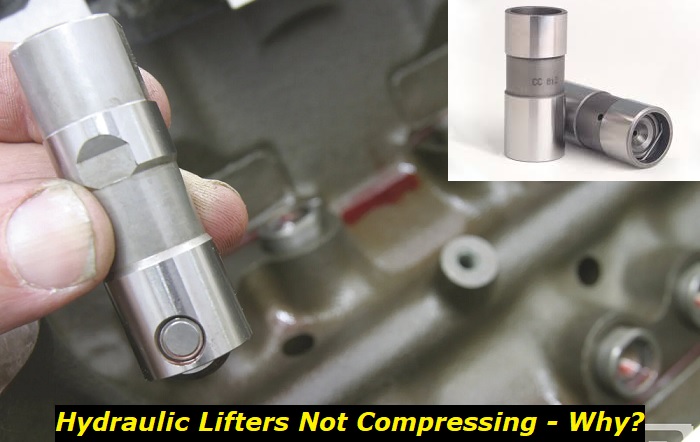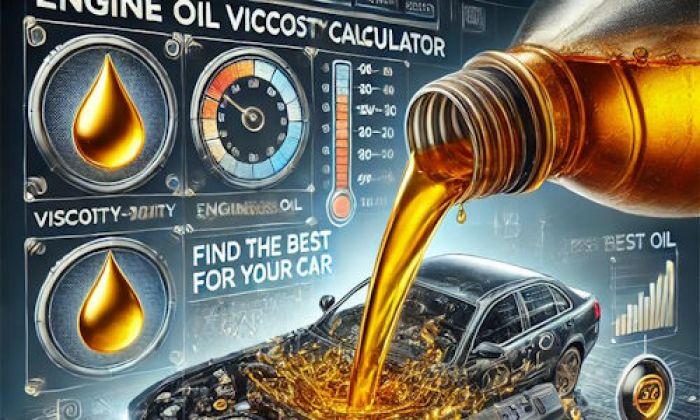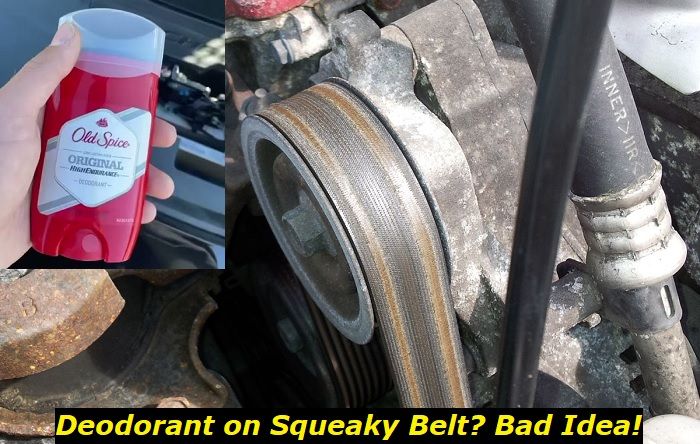Hydraulic lifters are an essential component as they help reduce noise and vibration. Hydraulic lifters work by using engine oil pressure to provide a cushion between the camshafts and the valves, thus, allowing them to open and close without any metal-to-metal contact. This reduces friction, noise, and vibration levels significantly when compared with solid lifters.
Lifter problems highlights
- Level of importance:Medium
- Commonreasons:Age, poor oil, too high oil viscosity, mileage
- DIY inspection:Almost impossible
- DIY repair:Possible but very complicated
- Price for repair:$450 - $1,200
- Can you drive?Usually, yes
- Ways to fix:In most cases, replacing the lifters will be the only proper choice

What Hydraulic Lifters Do
Common hydraulic lifters feature a piston that is connected to a pushrod via its plunger. When the engine starts up, oil pressure pushes against the plunger for it to move up or down depending on conditions. As cam lobes rotate over the valves during operation, lift height can vary slightly due to changes in spring tension and oil pressure. This variation allows each valve to open and close precisely, which is essential for proper engine performance.
When the piston moves up inside the lifter body, it draws in oil from a small hole that is connected to the engine's main lubrication system. The lifter will then remain full of oil until the valves close and reverse force pushes out any extra oil back into the main lubrication system. As such, hydraulic lifters are self-adjusting and require little maintenance compared to solid lifters, making them an ideal choice for many vehicle owners who are looking for a reliable solution with minimal upkeep.
Hydraulic lifters also help reduce wear on other components due to their cushioning effect. This means that parts such as camshafts and valve springs can last longer, which aids in keeping maintenance costs down. Furthermore, the reduced noise from hydraulic lifters makes engine operation quieter, leading to a more comfortable ride for passengers.
In a nutshell, hydraulic lifters offer numerous advantages over solid lifters for vehicle owners looking for an efficient and low-maintenance solution. By providing a cushion between valves and camshafts, these components help reduce friction, wear on other parts, and noise levels while allowing precise control of lift height. Overall, hydraulic lifters are an ideal choice for vehicles that require reliable performance with minimal upkeep.
Most Common Causes of Compression Issues in Hydraulic Lifters
There are several possible causes of hydraulic lifter problems that can occur in a vehicle. The most common culprits are the following factors:
1. Insufficient Oil
Compression issues in hydraulic lifters may sometimes be as simple as not having enough lubrication in their system due to insufficient oil, which could be due to a lack of maintenance on the part of the owner or leaks.
Diagnosing insufficient oil in a hydraulic lifter can be done through visual inspection and noting the symptoms. When examining a hydraulic lifter, signs of insufficient lubrication can include an uneven exterior surface and worn or pitted surfaces around moving parts. Additionally, inadequate lubrication may cause excess wear on components such as pistons and seals, leading to accelerated corrosion of the equipment and premature failure.
The solution to insufficient oil problem is simply to change the oil. This should be done regularly and according to the manufacturer's recommended schedule, as neglecting to do so can lead to the same problem recurring in the future. If a hydraulic lifter continues having issues with inadequate lubrication even after changing the oil, then it may be an indication that something else is wrong, like a faulty seal or worn piston rings. In this case, it is best to take the equipment to a qualified service provider for further diagnosis and repair.
Moreover, checking for leaks and signs of corrosion around seals can help prevent similar issues from happening again. If possible, use only high-quality lubricants approved by the equipment manufacturer for optimal performance and life expectancy of the lifter.
2. Debris Clogging the System
The symptoms of this problem are readily apparent such as the sound of air being expelled from the valve, an unsteady idle, and reduced engine performance. Luckily, these can be assessed with a few simple tools.
To begin, check the oil filter for any signs of excessive dirt build-up or contaminants. If the filter contains more than normal amounts of material, it may point to a potential issue with "sludge" build-up due to low-quality oil.
Next, perform a manual check-up on all necessary components such as valves and gaskets. Any corroded or damaged parts should be replaced as soon as possible. If a manual check-up does not yield satisfactory results, inspect the intake and exhaust manifolds for any clogs or blockages.
If after these steps you are still unable to locate the source of your compression issues, it's likely that debris is present in the hydraulic system.
To fix this issue, an engine flush may be necessary to remove excess dirt and contaminants from within the system. The filter may also need to be changed if it's already worn or the deposits are already hard to remove. The same can be said for other parts that may be affected by the problem.
Don't hesitate to ask for the service of a professional mechanic if you are not confident with your skills or you lack knowledge in performing such repairs. A professional mechanic can help identify and address any other underlying problems with the system before performing a flush or filter replacement.
It is important to note that most mechanical components require regular maintenance in order to remain reliable over time. Properly maintaining your vehicle will go a long way in ensuring it runs smoothly and avoiding any major problems down the line.
3. Improper Calibration of Valves
The most common reason for the valves going out of calibration is due to wear and tear on the valve lash adjusters, which affects the amount of clearance between the rocker arm tip and valve stem tip.
The symptoms that may indicate improper calibration in its system include difficulty starting, engine misfiring or rough idling, as well as decreased performance. To diagnose this problem, a manual check-up should be conducted with a few simple tools.
First, ensure there are no loose nuts or bolts along the valve lash adjusters. If any are found, they should be tightened appropriately while taking care not to overtighten them. Second, use a feeler gauge to measure the lash clearance. The gap should be as per specifications and if not, then it needs to be adjusted accordingly. Lastly, check to see if all the valves are operating evenly by listening to them with a stethoscope. If any of the valves seem too loud, this indicates that they may need adjustment or replacement.
Once these steps have been followed, any compression issues resulting from improper hydraulic lifter valve calibration should be resolved provided no further damage has occurred. In addition to these, regular maintenance and tune-ups can help ensure that hydraulic lifter valves stay calibrated and avoid potential problems in the long run.
4. Worn or Damaged Hydraulic Lifters
Compression issues may also occur if the hydraulic lifters themselves are already worn due to age or damaged for some reason. To diagnose this, a manual check-up of the lifters is necessary.
Symptoms that may indicate wear and/or damage include reduced power output, slow engine response, increased fuel consumption, increased exhaust emissions, misfiring, and rough running. The most common reason for wear or damage in hydraulic lifters is a build-up of dirt and carbon deposits. This is usually caused by the engine not being properly serviced or maintained over time.
To identify this issue while doing a manual check-up of the hydraulic lifters, specialized tools are needed such as compression gauges to measure cylinder pressure; dial indicators to measure valve lift; oil pressure gauge readings; feeler gauges for checking gap clearance between cam lobes and followers; a micrometer for measuring valve stem wear; and magnifying glasses to check for any signs of broken or damaged parts.
Once the diagnosis is complete, the solution may involve replacing the worn lifters with new ones and/or cleaning out debris from the engine block or intake. It is also recommended to perform regular maintenance on both the hydraulic lifters and engine as this reduces the chances of dirt building up in critical components over time, thereby helping prevent compression issues due to wear or damage in hydraulic lifters.
In more severe cases, it may be necessary to replace certain parts of the engine such as valves, pistons, and rings. When replacing these parts, it is important to use high-quality components that are designed to meet OEM specifications and provide reliable performance. In some cases, a complete engine rebuild may be required if the damage is serious enough.
Conclusion
Regardless of the cause, and no matter what solution is chosen, it is essential that all components are properly serviced and maintained to ensure optimal performance of the hydraulic lifters and engine as a whole. Proper care and regular maintenance will surely work wonders in helping extend the lifespan of your car's engine and reduce the chances of further wear or damage in hydraulic lifters due to neglect or lack of attention.
About the authors
The CarAraC research team is composed of seasoned auto mechanics and automotive industry professionals, including individuals with advanced degrees and certifications in their field. Our team members boast prestigious credentials, reflecting their extensive knowledge and skills. These qualifications include: IMI: Institute of the Motor Industry, ASE-Certified Master Automobile Technicians; Coventry University, Graduate of MA in Automotive Journalism; Politecnico di Torino, Italy, MS Automotive Engineering; Ss. Cyril and Methodius University in Skopje, Mechanical University in Skopje; TOC Automotive College; DHA Suffa University, Department of Mechanical Engineering






Add comment